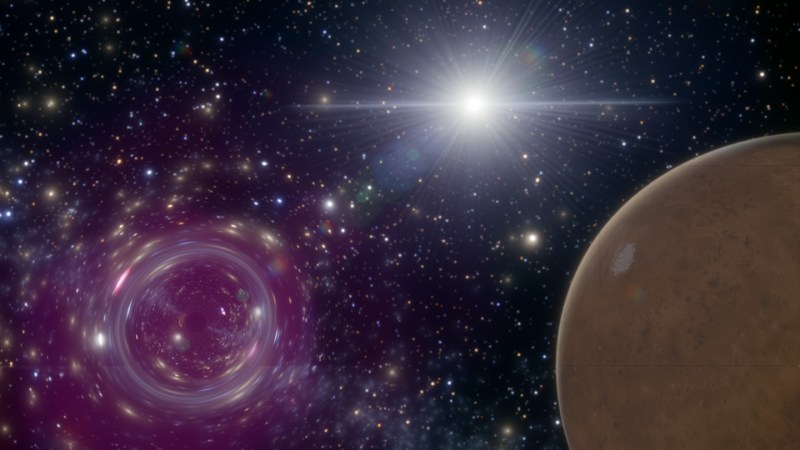
Extreme Climate Survey
Scientific news is collecting questions from readers about how to navigate our planet’s changing climate.
What do you want to know about extreme heat and how it can lead to extreme weather events?
Black holes usually form when a dying star collapses, resulting in a black hole at least several times the mass of the sun. Some scientists think that smaller black holes may have formed in the early universe, perhaps from quantum fluctuations that caused parts of space to collapse directly.
When such a primordial black hole passes close to a planet, it can produce visible effects despite its small size, researchers report Sept. 17. Physical examination D. “The incredibly strong gravitational pull of this primordial black hole will have the effect of causing Mars to wobble in its orbit around the sun,” says cosmologist Sarah Geller, a National Science Foundation fellow based at the University of California, Santa Cruz. In the future, Geller and colleagues plan to collaborate with researchers who are capable of doing detailed simulations of the solar system to dig through the data for the oscillations.
Likewise, a primordial black hole flying by could push GPS satellites and similar satellite networks, cosmologist Sébastien Clesse and colleagues report Sept. 16 in the same journal.. If a primordial asteroid-sized black hole whizzed by Earth within thousands or hundreds of thousands of kilometers, satellites could change altitude by a small but noticeable amount. “It’s very exciting to know that we have some probes that can be used to actually detect baby black holes in the solar system,” says Clesse, of the Université Libre de Bruxelles in Belgium.
Asteroid-mass primordial black holes can pass through the inner solar system only once a decade. Fortunately, scientists have decades of data on satellite trajectories. The same goes for the orbit of Mars, thanks to rovers and satellites around the planet.
Compared to the planetary oscillation technique, the satellite search would be sensitive to primordial black holes with smaller masses. “It’s very complimentary,” says astrophysicist and metrologist Bruno Bertrand of the Royal Observatory of Belgium in Uccle, who co-authored the satellite paper.
Fast asteroids can mimic the signature of primordial black holes. But black holes would have speeds of about 200 kilometers per second and would come from outside the solar system. This is rare for space rocks (SN: 9/12/19). “We have never seen an object pass through the solar system that would have the characteristics that we would associate with a black hole transit,” says physicist Ben Lehmann of MIT, a co-author of the paper on the planetary method. However, to settle the matter, ideally scientists would detect a wobble in real time and check for any space rocks that could explain it.
Other effects that can alter planetary orbits must also be accounted for, such as the solar wind of charged particles flowing from the sun, says astrophysicist Andreas Burkert of Ludwig-Maximilians-Universität München in Germany, who was not involved in two studies. . And the satellite technique could be particularly challenging, he says, arguing that a primordial black hole passing close enough to Earth to be detected could be an extremely rare event. So for now, Burkert says, “I don’t think it’s realistic.” But “I’m optimistic that it might be possible at some point.”
#Spot #Small #Black #Holes #Pass #Solar #System
Image Source : www.sciencenews.org